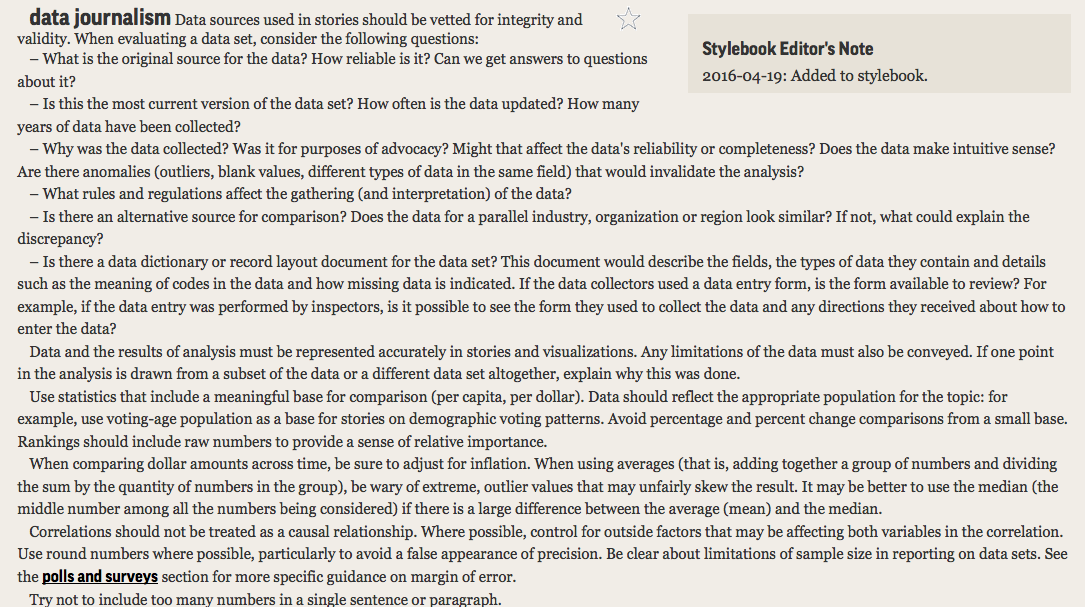 CC-licensed, via hatalamas on Flickr.
CC-licensed, via hatalamas on Flickr.
If you write about tech, you’ll find the Associated Press Stylebook is a little bit like Dear Abby. By the time the bouffant-hair-and-matching-handbag set gets around to addressing an issue, it’s often already been answered by collective common sense.
Still, it’s nice to see the venerable news organization writing about data journalism in the same update where it finally relinquishes capitalizing the word internet.
The AP Stylebook entry on data journalism, added 2016-04-19, weighs in at just under 500 words.
It begins with six rules for evaluating a data set that range from the very basic (“What is the source?”) to the kind of deep dive that may prevent you from ever filing the story (“Is there a data dictionary or record layout document for the data set – which would describe the fields, types of data they contain and details and announcing detail as indicated?”) Side note: If you’re looking for an entire book of how to present data facts and figures for journalists, my favorite is still “The Wall Street journal guide to information graphics: the dos and don’ts of presenting data, facts, and figures” by Dona M Wong. [public library]
 The next section launches into the math of doing data journalism, a reminder that word people are often not numbers people. Or a reminder to all that, yeah, elementary school math is good to know.
The next section launches into the math of doing data journalism, a reminder that word people are often not numbers people. Or a reminder to all that, yeah, elementary school math is good to know.
“Avoid percentage and percent change comparisons from a small base. Rankings should include raw numbers to provide a sense of relative importance.When comparing dollar amounts across time, be sure to adjust for inflation. When using averages (that is, adding together a group of numbers and dividing the sum by the quantity of numbers in the group), be wary of extreme, outlier values that may unfairly skew the result. It may be better to use the median (the middle number among all the numbers being considered) if there is a large difference between the average (mean) and the median.”
It heads into more advanced territory with a paragraph on causality, rounding numbers and sample size before winding up with a solid reminder for data-happy hacks: “Try not to include too many numbers in a single sentence or paragraph.”
Now we only have to wait and see how the Stylebook passes judgement on the proper abbreviation for “internet of things.”

First, the AP Stylebook lowercased “internet,” now there’s a “data journalism” entry. What’s next? https://t.co/ofH3dHLMoC
The Associated Press Stylebook weighs in on data journalism: CC-licensed, via hatalamas on Flickr. I… https://t.co/AzzMpu6RHG #stories
The Associated Press Stylebook weighs in on data journalism https://t.co/jkRubFaEq3